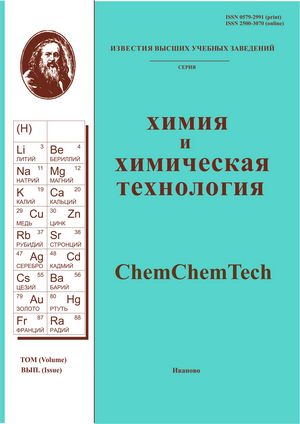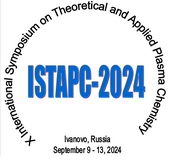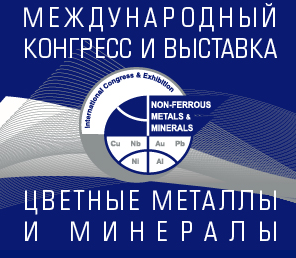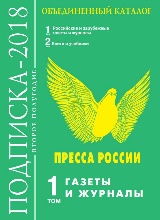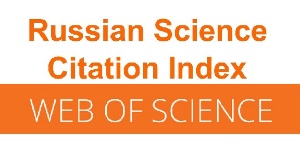ОГНЕУПОРНОЕ ГЛИНИСТОЕ СЫРЬЕ РЕСПУБЛИКИ БЕЛАРУСЬ ДЛЯ ПРОИЗВОДСТВА КЕРАМОГРАНИТА
Аннотация
Изучена возможность замены импортируемых огнеупорной глины и каолина, входящих в состав керамической массы для производства керамогранита, на огнеупорные глинистые материалы Республики Беларусь, в частности, кварц-пирофиллит-каолинитовую породу и каолины месторождений «Ситница» и «Дедовка». При выборе системы сырьевых материалов за основу взят производственный состав предприятия ОАО «Керамин» (г. Минск, Республика Беларусь). Установлено, что при введении в сырьевую смесь 2,5–15,0 мас.% кварц-пирофиллит-каолинитовой породы, физико-химические свойства и эксплуатационные характеристики керамогранита соответствуют требованиям стандарта EN 14411:2014. Более высокое содержание данного компонента приводит к уменьшению общего количества стекловидной фазы в структуре керамических плиток, что вызывает повышение их водопоглощения, открытой пористости, а также снижение механической прочности при изгибе и кажущейся плотности. Основными кристаллическими фазами синтезированных материалов являются муллит и кварц. Также выявлено, что импортируемый каолин можно полностью заменить на каолины месторождений «Ситница» и «Дедовка», при этом значения физико-химических свойств и эксплуатационных характеристик изделий сохранятся на требуемом уровне. Сканирующая электронная микроскопия показала, что синтезированные с использованием каолинов Республики Беларусь образцы керамического гранита обладают плотной спекшейся структурой. Газовая фаза в данных материалах практически отсутствует, обнаружено присутствие лишь отдельных мелких нерегулярных пор. Рентгенофазовый анализ показал, что основными кристаллическими фазами являются муллит, кварц, микроклин и гематит. Именно гематит придает полученным образцам керамогранита темно-серую цветовую гамму. Таким образом, применение отечественного огнеупорного глинистого сырья обеспечивает импортозамещение и снижение себестоимости готовой продукции.
Литература
Taskiran M., Demirkol N., Capoglu A. A new porcelainised stoneware material based on anorthite. J. Eur. Ceram. Soc. 2005. V. 25. N 4. P. 293–300. DOI: 10.1016/j.jeurceramsoc.2004.03.017.
Galos K. Composition and ceramic properties of ball clays for porcelain stoneware tiles manufacture in Poland. Appl. Clay Sci. 2011. V. 51. N 1. P. 74–85. DOI: 10.1016/j.clay.2010.11.004.
Zanelli C., Raimondo M., Guarini G., Dondi M. The vitreous phase of porcelain stoneware: composition, evolution during sintering and physical properties. J. Non-Cryst. Solids. 2011. V. 357. N 16. P. 3251–3260. DOI: 10.1016/j.jnoncrysol.2011.05.020.
Vichaphund S., Somton K., Wonglom T., Rodchom M., Atong D. Utilization of basalt fibers as a raw material for clay ceramic production. Ceramics – Silikaty. 2016. V. 60. N 2. P. 72–76. DOI: 10.13168/cs.2016.0011.
Martin-Marquez J., Rincon J.M., Romero M. Mullite development on firing in porcelain stoneware bodies. J. Eur. Ceram. Soc. 2010. V. 30. P. 1599–1607. DOI: 10.1016/j.jeurceramsoc.2010.01.002.
Perez J.M., Romero M. Microstructure and technological properties of porcelain stoneware tiles moulded at different pressures and thicknesses. Ceram. Int. 2014. V. 40. N 1. P. 1365–1377. DOI: 10.1016/j.ceramint.2013.07.018.
Kumar S., Singh K.K., Ramachandrarao P. Effects of fly ash additions on the mechanical and other properties of porcelainised stoneware tiles. J. Mater. Sci. 2001. V. 36. N 24. P. 5917–5922. DOI: 10.1023/A:1012936928769.
Kamseu E., Leonelli C., Boccaccini D.N., Veronesi P., Miselli P., Giancarlo Pellacani, Chinje Melo U. Characterisation of porcelain compositions using two china clays from Cameroon. Ceram. Int. 2007. V. 33. N 5. P. 851–857. DOI: 10.1016/j.ceramint.2006.01.025.
Galos K. Influence of mineralogical composition of applied ball clays on properties of porcelain tiles. Ceram. Int. 2011. V. 37. N 3. P. 851–861. DOI: 10.1016/j.ceramint.2010.10.014.
Barrachina E., Calvet I., Fraga D., Carda J.B. Ceramic porcelain stoneware production with Spanish clays purified by means of the removal of iron compounds and organic matter using physical methods. Appl. Clay Sci. 2017. V. 143. P. 258–264. DOI: 10.1016/j.clay.2017.03.024.
Mukhopadhyay T.K., Ghosh S., Ghatak S., Maiti H.S. Effect of pyrophyllite on vitrification and on physical properties of triaxial porcelain. Ceram. Int. 2006. V. 32. N 8. P. 871–876. DOI: 10.1016/j.ceramint.2005.07.002.
Dana K., Ghosh S., Kumar Mukhopadhyay T., Kumar Das S. Feldspathic and pyrophyllitic porcelain evolution during fast firing. Am. Ceram. Soc. Bull. 2006. V. 85. N 12. P. 9201–9203.
Mukhopadhyay T.K., Ghatak S., Maiti H.S. Effect of pyrophyllite on the mullitization in triaxial porcelain system. Ceram. Int. 2009. V. 35. N 4. P. 1493–1500. DOI: 10.1016/j.ceramint.2008.08.002.
Mukhopadhyay T.K., Ghatak S., Maiti H.S. Effect of pyrophyllite incorporation in porcelain composition on mechanical properties and microstructure. Ceram. Internat. 2009. V. 35. N 7. P. 2555–2562. DOI: 10.1016/j.ceramint.2009.01.003.
Alimdzhanova D.I., Ismatov A.A., Ganieva M.M. The effect of quartz-pyrophyllite raw material on porcelain structure formation. Glass Ceram. 1999. V. 56. N 1. P. 61–63. DOI: 10.1007/BF02681410.
Mukhopadhyay T.K., Ghatak S., Maiti H.S. Pyrophyllite as raw material for ceramic applications in the perspective of its pyro-chemical properties. Ceram. Int. 2010. V. 36. N 3. P. 909–916. DOI: 10.1016/j.ceramint.2009.10.026.
Dondi M., Raimondo M., Chiara Z. Clays and bodies for ceramic tiles: Reappraisal and technological classification. Appl. Clay Sci. 2014. V. 96. P. 91–109. DOI: 10.1016/j.clay.2014.01.013.
Kizilkaya N., Onal M., Depci T., Yucel A. Usability of Malatya pyrophyllite in the traditional ceramic industry. IOP Conf. Ser.: Earth Environ. Sci. 2016. V. 44. DOI: 10.1088/1755-1315/44/5/052007.
Yakovleva N.S., Barantseva S.E., Poznyak A.I. Pyrophillite-kaolinite rocks of the lower carboniferous of Belarus – perspective kind of mineral raw materials. Litasfera. 2017. V. 47. N 2. P. 93–103 (in Russian).
Яковлева Н.С., Баранцева С.Е., Позняк А.И. Пирофиллит-каолинитовые породы нижнего карбона Беларуси – перспективный вид минерального сырья. Лiтасфера. 2017. Т. 47. № 2. С. 93–103.
Barantseva S.E., Yakovleva N.S., Poznyak A.I., Nichipor V.N. Pyrophillite and kaolinite strata as a promising raw material for ceramic industry. Probl. Nedropol'zovaniya. 2018. N 1. P. 82–86. DOI: 10.25635/2313-1586.2018.01.082 (in Rus-sian). Баранцева С.Е., Яковлева Н.С., Позняк А.И., Ничипор В.Н. Пирофиллит-каолинитовые породы - перспективный сырьевой материал для керамической промышленности. Пробл. недропользования. 2018. № 1. С. 82–86. DOI: 10.25635/2313-1586.2018.01.082.
Sergievich O.A., Dyatlova E.M., Malinovski G.N., Barantseva S.E., Popov R.Yu. A study on the kaolin deposits of Belarus with a purpose for their use for the manufacture of ceramic tiles of various functions. Proc. BSTU. Chem. Technol. Inorg. Subst. 2013. N 3. P. 105–111.
Sergievich O.A., Dyatlova E.M., Popov R.Yu., Sobachevskii A.S. Thermal and deformative characteristics of kaolin raw deposits of the Republic of Belarus. Eng. Struct. Technol. 2015. V. 7. N 2. P. 97–102. DOI: 10.3846/2029882X.2015.1113893.

